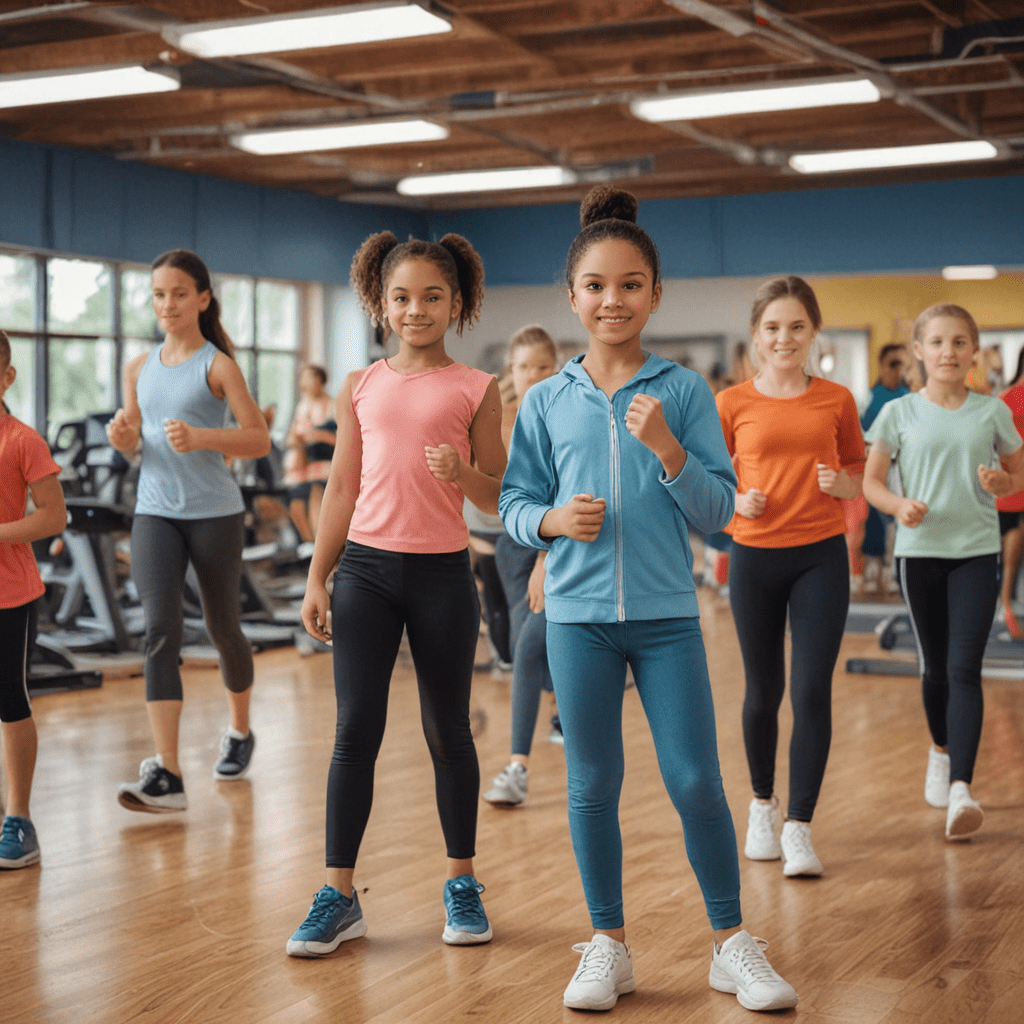1. Introduction
In today's digital era, children's fitness faces significant challenges due to sedentary lifestyles and limited outdoor play. Community centers play a pivotal role in addressing these concerns by offering structured programs and a supportive environment that encourages physical activity and overall well-being.
2. Definition and Importance of Community Centers
Community centers are non-profit organizations that provide a safe and accessible space for individuals and families to engage in various activities, including fitness and recreation. They offer a range of programs tailored to meet the needs of diverse communities, focusing on affordability and inclusivity.
3. Benefits of Children’s Fitness
Regular physical activity is crucial for children's development. It promotes physical health, improves cardiovascular fitness, strengthens muscles and bones, and enhances cognitive function. Fitness also fosters social skills, self-confidence, and a positive body image. By engaging in physical activities, children establish healthy habits that can benefit them throughout their lives.
4. Role of Community Centers in Promoting Children’s Fitness
Community centers serve as a vital hub for children's fitness by providing structured programs and activities that encourage participation in a fun and engaging way. They offer a variety of activities, such as sports, games, dance, and fitness classes, designed to appeal to different age groups and interests. Community centers also provide a safe and supervised environment where children can interact with peers and learn valuable social skills.
5. Types of Programs and Activities Offered
Community centers offer a wide array of programs and activities designed to cater to the diverse needs of children. These may include:
- Sports leagues and tournaments (e.g., basketball, soccer, baseball)
- Fitness classes (e.g., yoga, Zumba, martial arts)
- Dance classes (e.g., ballet, hip-hop, modern)
- After-school programs that incorporate physical activity
- Summer camps focused on fitness and outdoor adventures
These programs typically feature age-appropriate activities tailored to skill levels, providing opportunities for children to develop new abilities and foster a love for physical activity.
6. Collaboration with Schools and Other Organizations
Community centers often collaborate with schools and other organizations to maximize their reach and impact. By partnering with schools, they can integrate fitness programs into the school day, providing opportunities for children to engage in physical activity during and after school hours. Community centers also work with local health agencies, youth development organizations, and faith-based groups to offer comprehensive fitness programs that address the needs of the community.
7. The Role of Trained Staff and Volunteers
Trained staff and volunteers play a vital role in ensuring the success of community center fitness programs. Certified professionals provide expert guidance, creating safe and effective workout environments. Volunteers assist with supervision, instruction, and support, fostering a sense of community and belonging. By working together, staff and volunteers motivate children, build confidence, and inspire them to adopt healthy habits.
8. Addressing the Needs of Underserved Communities
Community centers prioritize reaching underserved communities where children may face barriers to fitness opportunities. They offer affordable or free programs, provide transportation, and work with community leaders to identify and address specific needs. By tailoring programs to local demographics and socioeconomic factors, community centers ensure equitable access to fitness resources, empowering children from all backgrounds to lead active and healthy lives.
9. Evaluating the Impact of Community Centers on Children’s Fitness
Community centers regularly evaluate the impact of their fitness programs to ensure they are meeting the needs of the community. They track participation rates, monitor progress through fitness assessments, and gather feedback from children and families. This data helps centers adapt their programs to maximize effectiveness, measure outcomes, and demonstrate the positive impact of their efforts on children's overall well-being.
10. Conclusion
Community centers are crucial to promoting children's fitness by providing accessible, affordable, and engaging programs in a supportive environment. Through a wide range of activities, partnerships with schools and organizations, and the dedication of trained staff and volunteers, community centers empower children to adopt healthy habits, develop physical skills, and cultivate a lifelong love for fitness. By prioritizing the needs of underserved communities and evaluating the impact of their programs, community centers ensure that every child has the opportunity to lead an active and healthy life.
FAQs
What are the benefits of community center fitness programs for children?
- Improved physical health and well-being, increased confidence, enhanced social skills, and established healthy habits.
What types of activities are typically offered at community center fitness programs?
- Sports leagues, fitness classes, dance classes, after-school programs, and summer camps.
How do community centers address the needs of underserved communities?
By offering affordable or free programs, providing transportation, and tailoring programs to local demographics and socioeconomic factors.
- How do community centers evaluate the impact of their fitness programs?
- By tracking participation rates, monitoring progress through fitness assessments, and gathering feedback from children and families.



